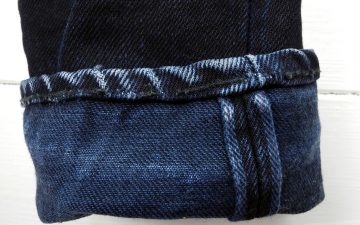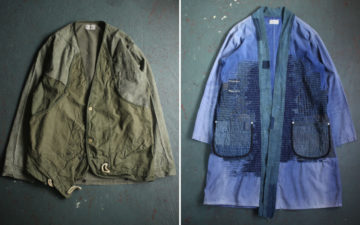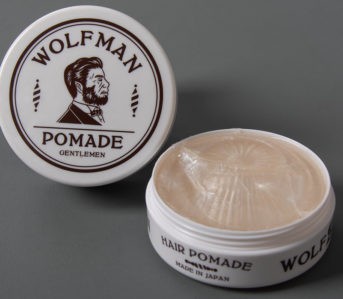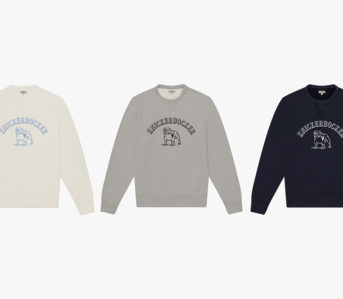Today, we’re talking about patches. Not necessarily the patches of plain fabric that workers would use to fix rips, tears, and holes in their one pair of pants in the early to mid-1900s. And definitely not the kind that is worn over an eye of a pirate. No, we are going to dig into the decorative accessory. The kind of patch that shows rank or just looks cool, meant not necessarily for repair but to add some flair. The very same that your family mechanic might wear on his work shirt professionally and your hipster sister might wear on their denim jacket.
If you’ve ever wondered how we got to the point where patches can be seen on all manner of garments and
Patching in the History
It is believed that patches developed independently in a variety of locales: ancient Mediterranean, Mideast, Chinese, Indian, and South American cultures as decorating fabric with stitching gained popularity. For a long time, patches had to be done by hand. Not only was this process painstakingly slow and intricate, it was a luxury, which meant having a patch was a special honor. Mostly reserved for royalty and the upper crust of society, embroidered cloth and patches were a symbol of status. Embroidered designs were even used for religious artifacts to reinforce their value.
However embroidered patches became a little more democratized thanks to embroidery pioneers Joshua Heilmann, who is credited with creating the first hand embroidery machine in 1828 in Mulhouse, France, and Switzerland’s Isaak Grobil, who in 1863 created the first two-thread machine.
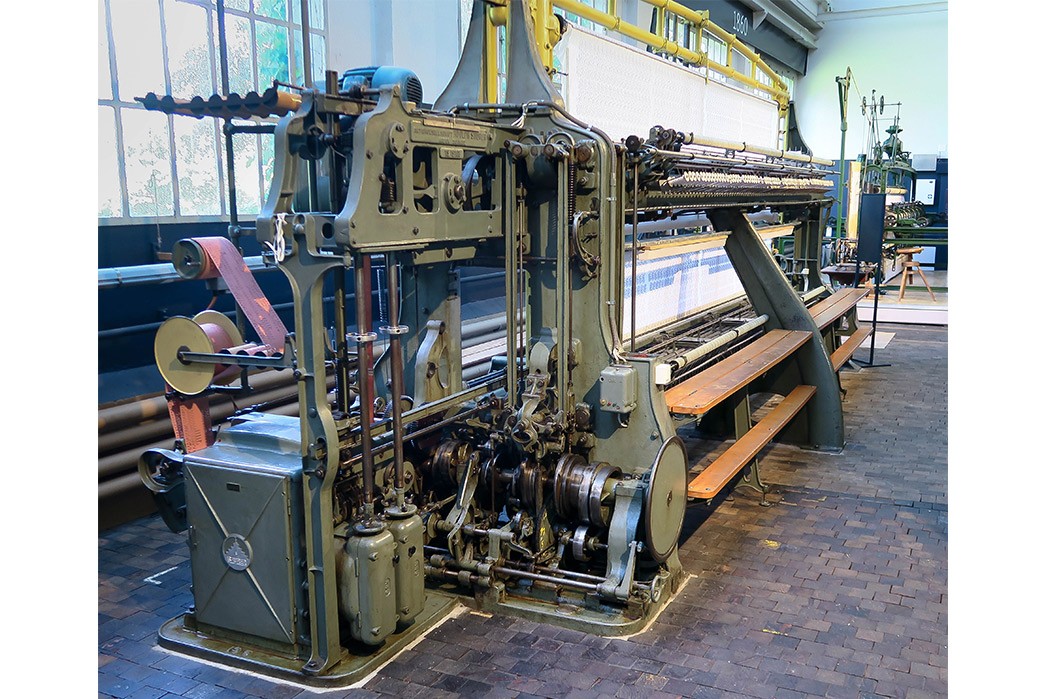
Modern day Schiffli embroidery machine via Wikipedia
For the first time, the fate of your patches no longer relied solely on slow, slow hands but relatively less slow machines.
By the early twentieth century, embroidery machines leveraged greater automation thanks to programmable machines and became a mass produced product.
Seen as an easy way to easily identify people on their clothing, patches continued to grow in popularity and were seen in military uniforms to delineate branch and rank, professional industries to differentiate employees, were commonplace in sports, and found their way into schools.
WWII represents one of the most revered periods for patches as distinctive designs were made for individual units of the US Army, Navy, Marines, Air Force, and Coast Guard, a tradition kept alive to this day. As far as collectors go, this era is also the most popular.
It wasn’t until the 1960s that patches made the switch from mainstream to subculture with the hippie movement in the US. Think smiley faces, rainbows, flowers, peace signs and cheeky quotes. Patches adorned everything from jackets, t shirts, and ironically worn military fatigues to the ultimate symbol of this time: jeans, mostly bell bottoms.
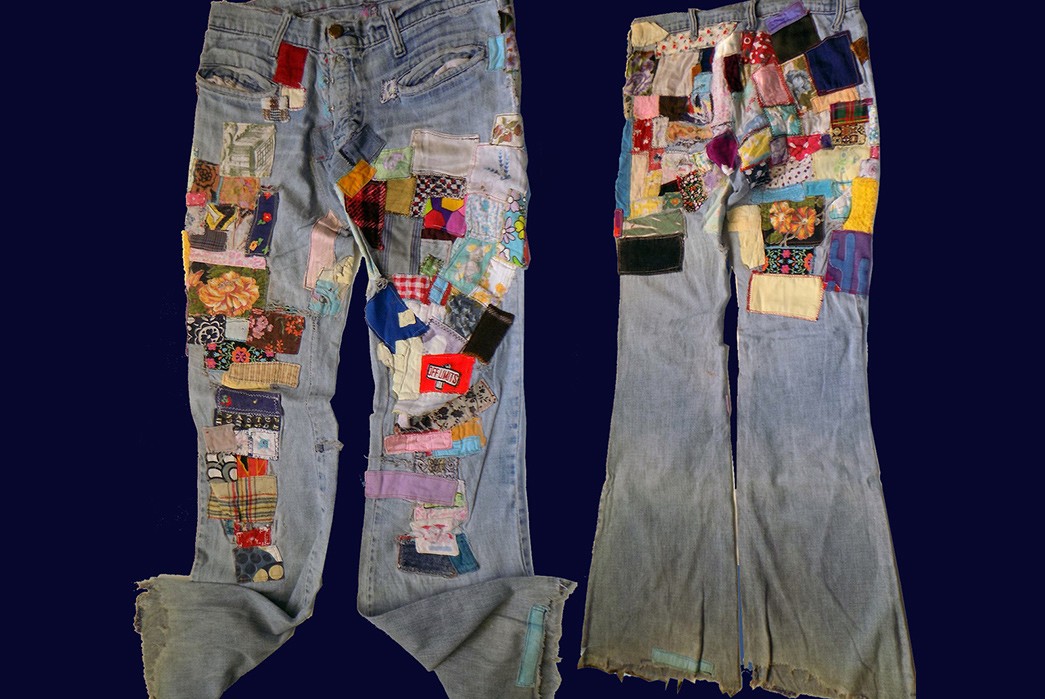
Perfectly patched 60s flare jeans via Collectors Weekly
This party raged on well into the 1970s until the 80s ushered in the punk scene. If the hippie movement meant peace and love, punks gravitated to more high energy forms of rebellion and their patches mirrored this. I’m talking band patches, anarchy and skull patches, and even homemade cloth patches all of which paired perfectly with studs, safety pins, and leather jackets.
These days, high fashion has co-opted the use of patches and homogenized them to the point of mainstream-ness again. Many high end offerings sporadically place vibrant patches on everything from denim to designer bags. Instant creativity/ originality right? Yup, until you see someone else wearing the same thing with the same patches laid out in the same way.
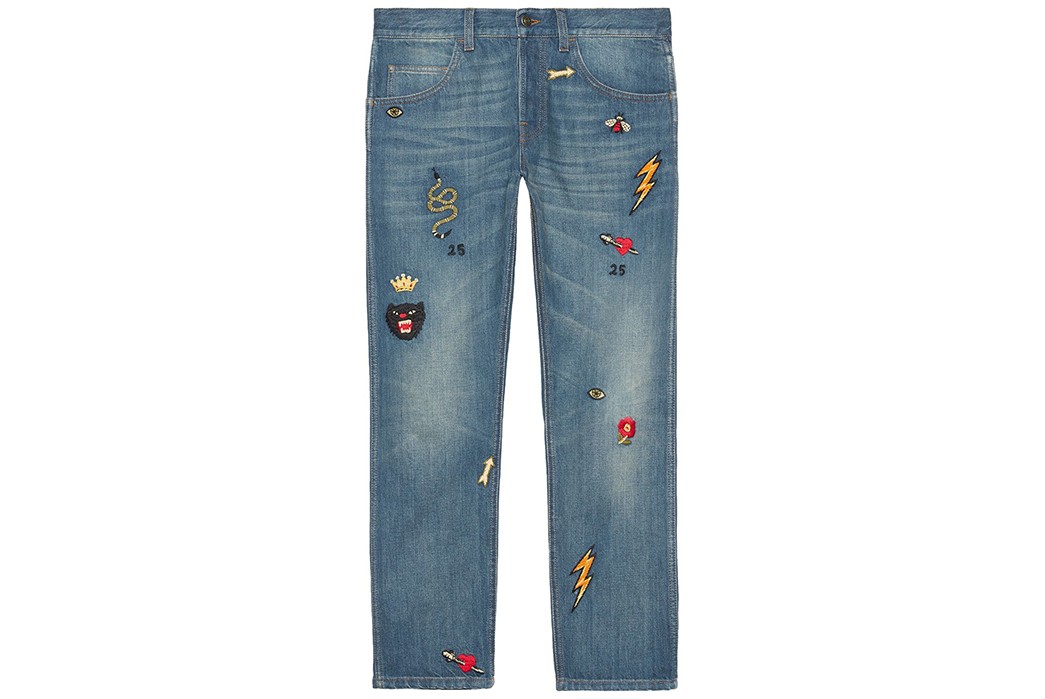
Gucci tapered denim pants with symbols via FarFetch
The Variety of Patch Styles
So far the patches I’ve mentioned are almost all embroidered, which are stitched from thick-ish thread and possess some good character thanks to differing textures. You’ll see embroidery patches on just about anything clothing related like jackets, jeans, suit jackets, uniforms, hats and even backpacks. If you are looking for a vintage look, this is the way to go.
However there are several other style patches that are also worth mentioning as well.
Woven patches are like the futuristic version of the embroidery patch, using thinner thread to achieve finer detail. Woven patches have a smooth surface with no raised texture. The images look clearer but it looks like the soul of the patch has been extracted as well.
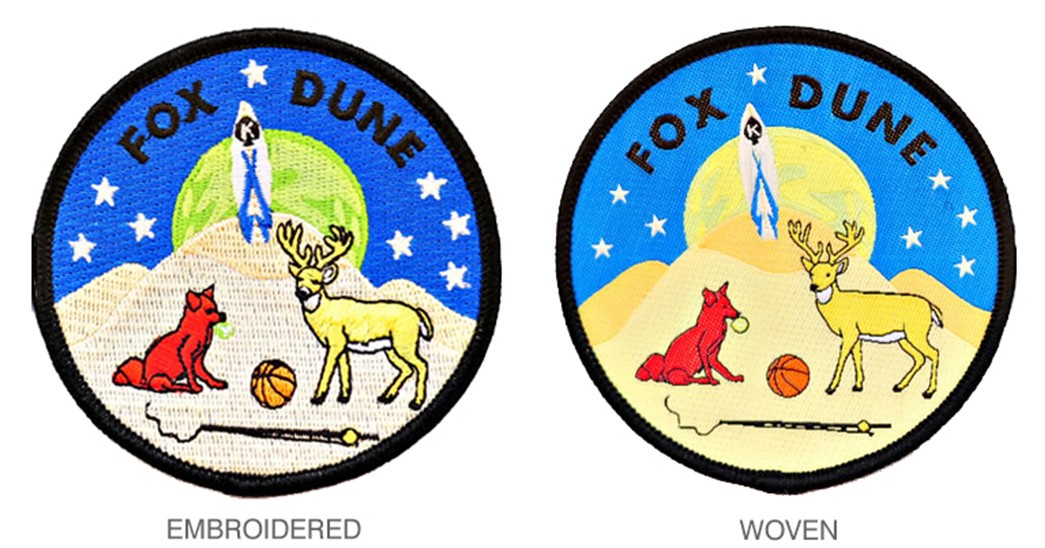
An embroidered patch compared to a woven patch via Sienna Pacific
Chenille patches are those fuzzy looking ones and get their name form the French word for caterpillar. Chenille is created by placing short lengths of yarn between two core yarns and then twisting them together creating that puff. You’ll normally see chenille patches on vintage school stuff like cheer sweaters and varsity jackets.
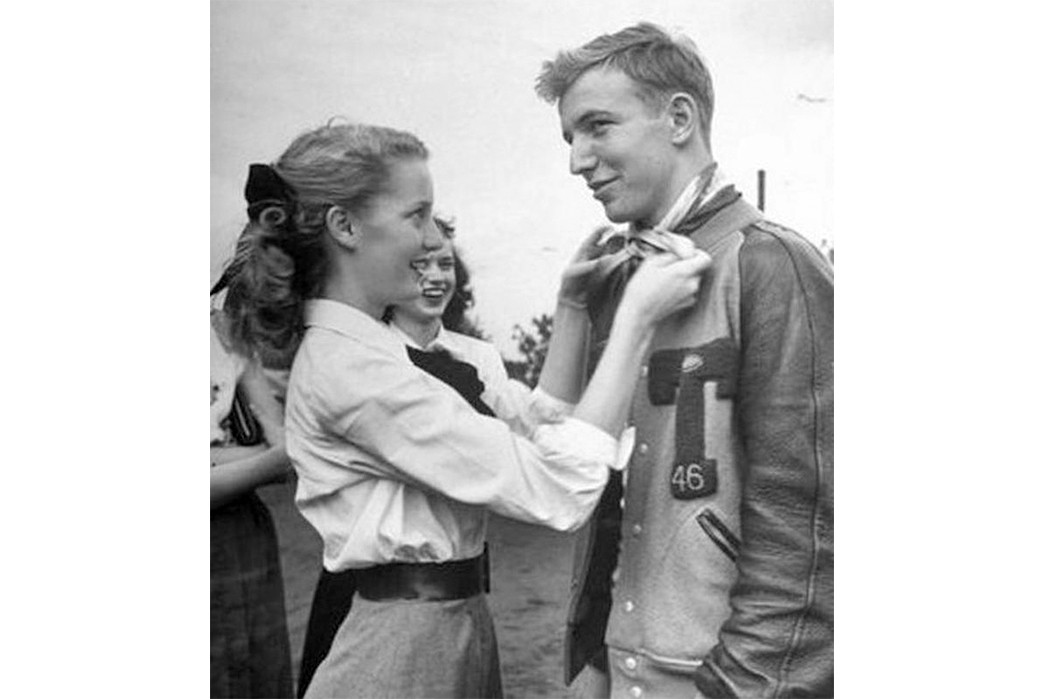
Chenille patch on letterman jacket via History Daily
Leather patches are pretty straightforward. My reference point for these are old Levis jackets and jeans, you know that paper patch on the back of the pants and interior if the jackets? Those used to be leather. That is why just about all the repro denim jeans and jackets on the market today use leather patches as well, just another one of those details to get right. Plus, they age beautifully.
You can also find leather patches on old outdoorsy focused products like puffy vests and backpacks. Now a-days I’d say they are reserved for fancy fashion brands and like I said, heritage fashion.

Printed patches use the same method of printing as t shirts and is perfect for when you want an actual image put on a patch.
Bullion patches are the rich aunt of the embroidered patch and use gold and silver bullion thread to give them a 3-D appearance but also a bit of shine. Definitely the most fancy kind of patch which is why they are often used on family crests and the like.
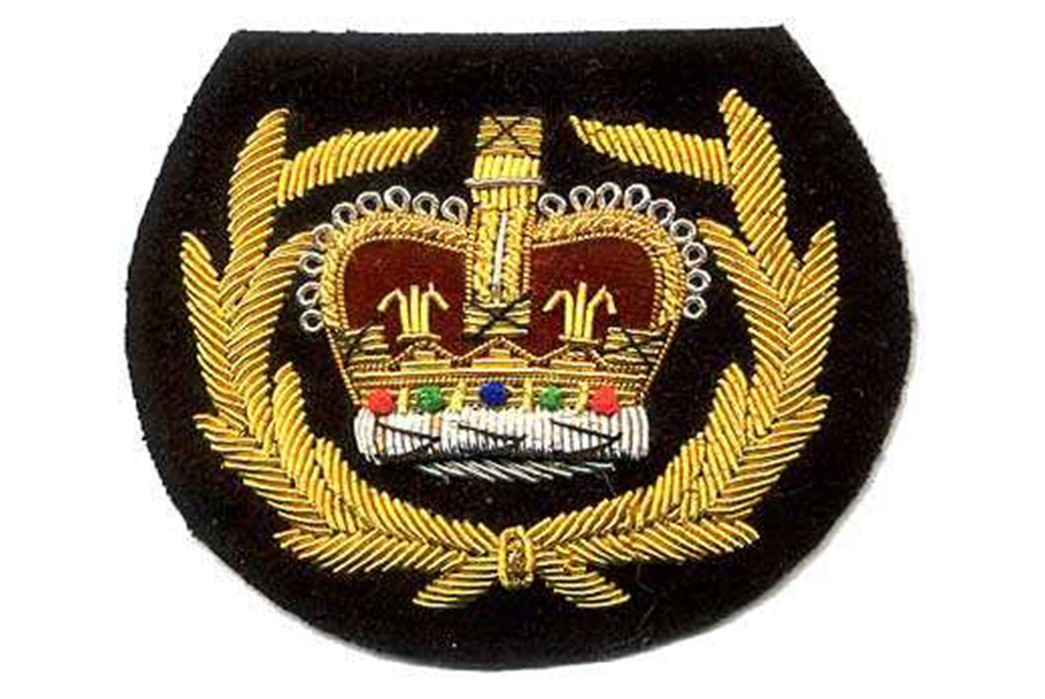
Bullion patch via American Patch
Lastly, and easily my favorite is the felt patch. These are the most simple and are what you make of it. At least that was the mentality back in the early 1900s when they were used to label sportswear, college sweaters, motorcycle jerseys, work wear, and any other pieces of clothing that needed a label or form of advertisement.
Some examples include the numbers and logos of early sports jerseys and the years of graduation on collegiate knit sweaters. Anything modern that uses felt embroidery is no doubt referencing this time in American history.
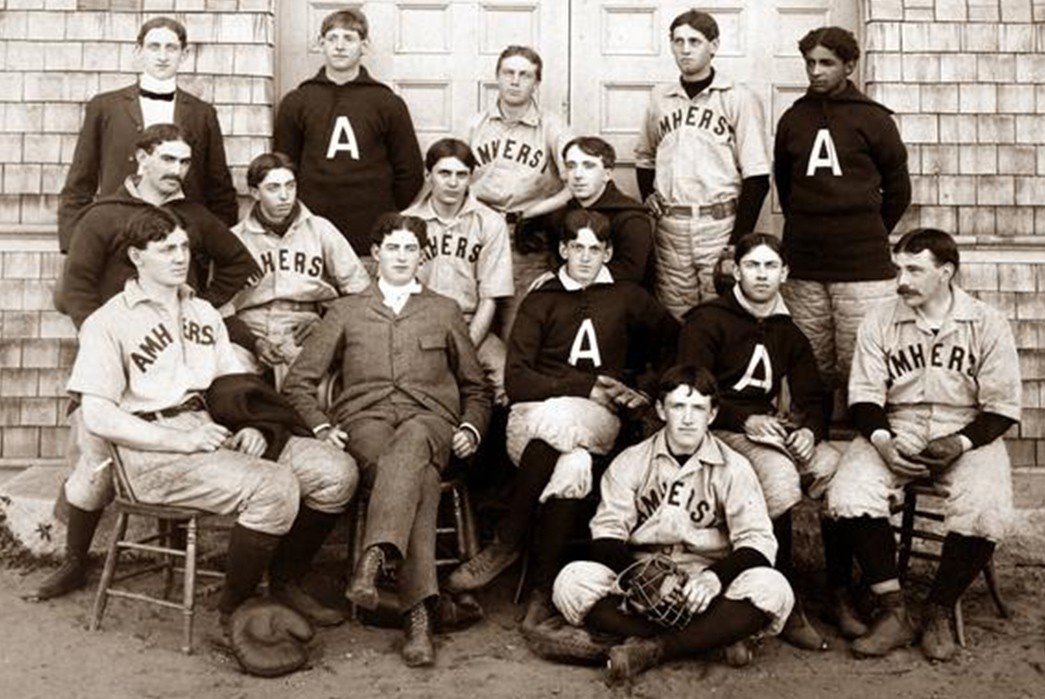
Felt embroidered antique uniforms and sweaters via Etsy
Is this thing on?
Amongst these different types of patches lies another characteristic worth mentioning: application.
Iron-on patches are embroidered or woven patches with an adhesive backing that reacts to heat allowing for quick application. For these, while you have a clothing iron on and warming up, lay out your patch on the garment you want to customize, preferably on a flat surface like an ironing board and place a thin cloth or towel over the garment and patch. Then with your now hot iron, apply pressure to the area until you think its good and stuck. Remember you can always check and put more heat on it so no need to overdo it on the first try and singe your clothing. And remember, this only works with iron-on patches.
Iron on patches are great for quick application and work well for items that don’t get worn or washed often. Otherwise they can begin to peel. If you ever have a change of heart on placement with an iron on patch, you are kind of out of luck. Even if you are able to peel it off, it will likely leave some residue.
The second, more traditional way to apply is a sewn on patch. All you need to do is thread a needle with a double thread and knot it at the end. Then you insert the needle from the back of the fabric to the edge of the patch and go back down. Repeat until you do the perimeter of the patch, go back down one last time and make a knot to secure it in place.
Sewing on a patch is more secure, more authentic, makes it easier to experiment with different layouts, and are more washer-dryer friendly. It’s also less damaging to the garment.
How do I get my fix?
Just like a lot of knick knacks, when you look for patches, you’ll find them. In terms of tiers, the free tier for acquiring patches is look around your home for ones that you got when you were younger but completely forgot about or asking your family who might have some stashed away from their WWII, hippie, or punk days. You never know! When you find out they threw all that stuff away decades ago, you can wallow in your sadness while making your own.
Your cheap tier is scoring at a flea markets, yard sales, or even your local craft store if you don’t need a vintage one.
Your next tier up ranges from ‘yeah I guess I could do that’ to ‘did I just do that?’ These artisan level patches are an ode to the old days of patches and feature fun designs in tasteful color palettes. They are usually made in small batches in the USA or Japan. You can find these on the same sites you already lurk for your raw denim like Clutch Café and Stag Provisions.
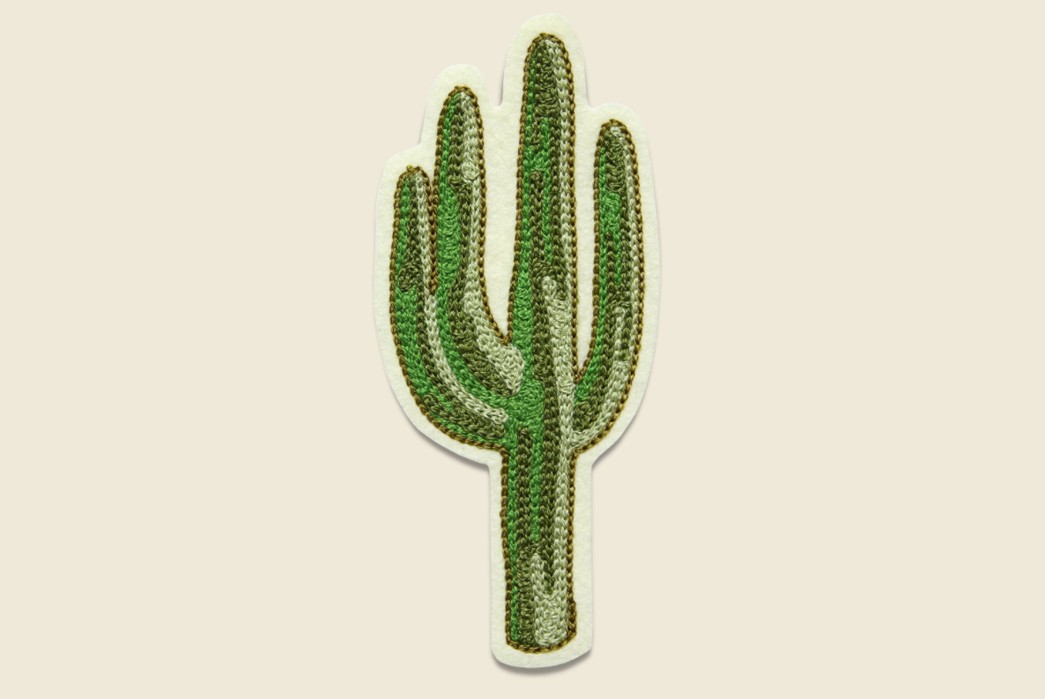
Ft. Lonesome Saguaro Cactus Patch via Stag Provisions
Your last tier is the collector tier aka “rent, car, or patch?” These are your rare and obscure military patches, especially from WWII. Up to this point, the patches have been meant to decorate clothing but these are likely just to admire from afar, don’t touch!
If you are looking for this kind of patch, you probably already know where to find them but for anyone looking to disrupt the market, check out ebay, type in WWII patch and sort by highest price.
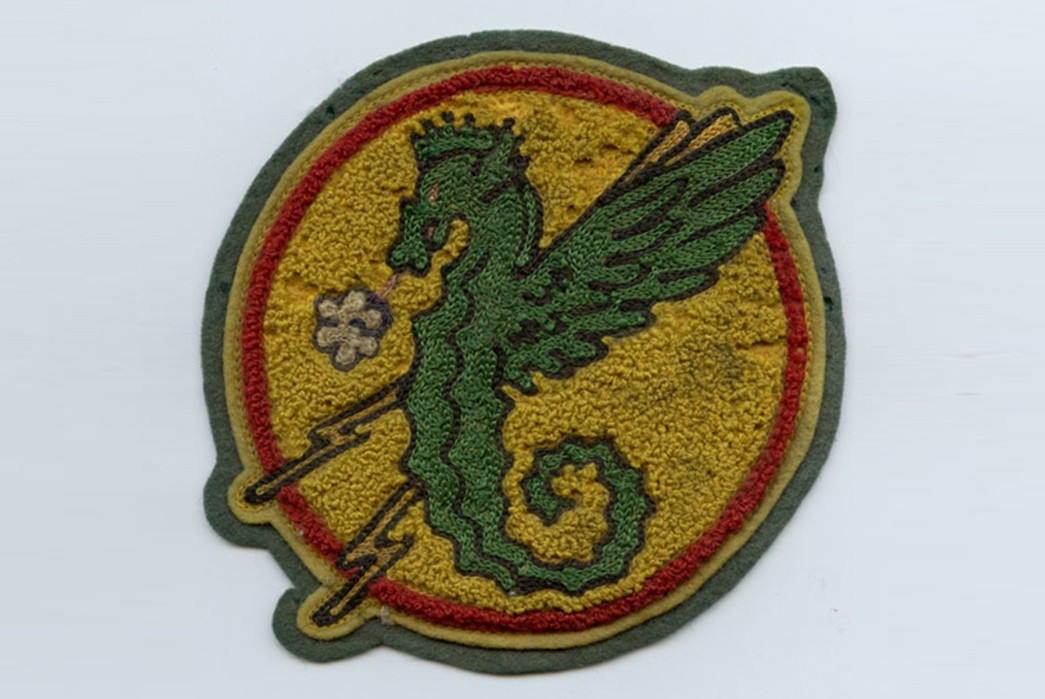
WWII US Navy patch via Flying Tiger Antiques
If this primer has left you with a patch-sized hole to fill, get out there and get patching!

